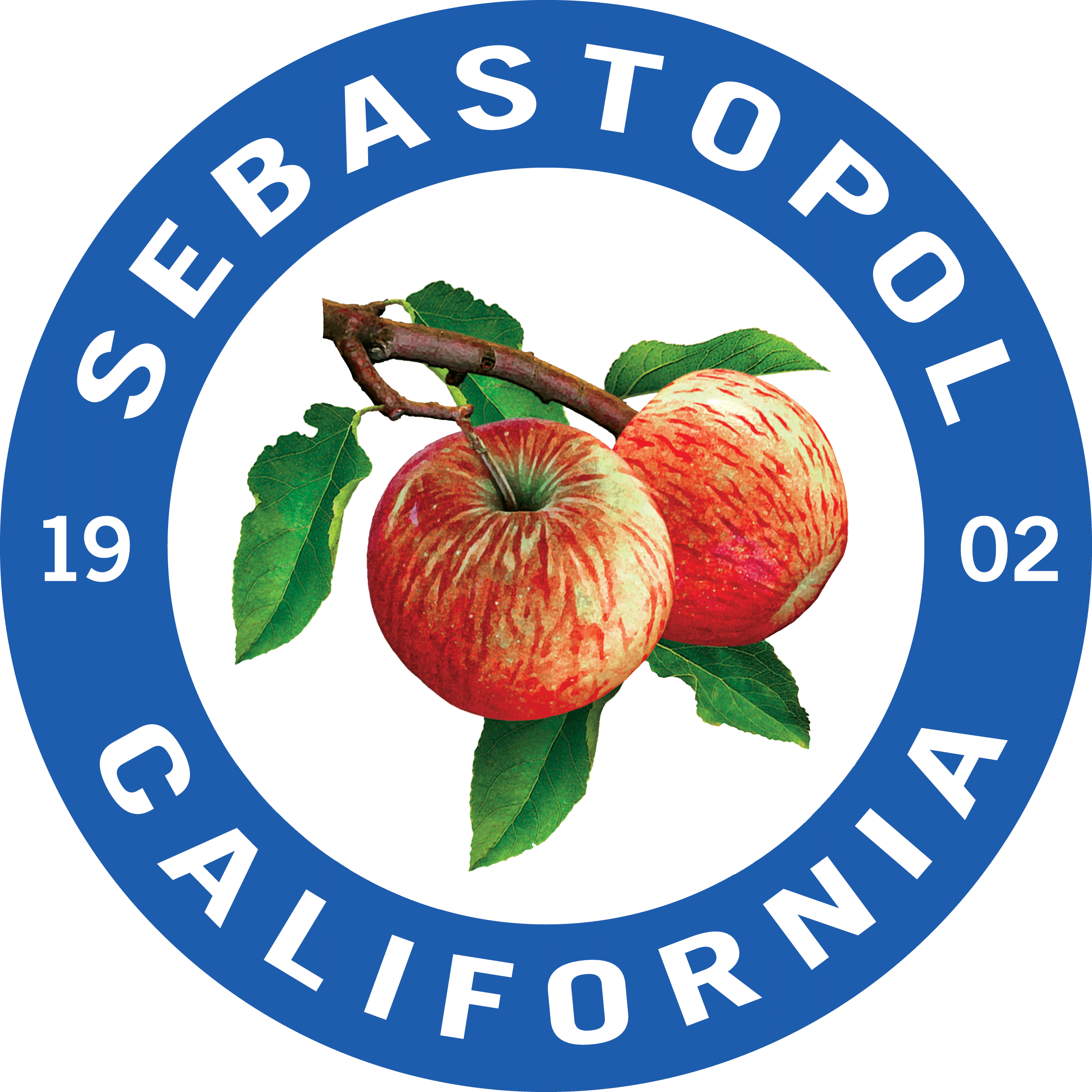Streets, Bikes and Pedestrians
Public Information and Assistance
Street Smart Sebastopol
Street Smart Sebastopol was a citizen committee that was formed around 2000 to prioritize pedestrian improvements in Sebastopol and to best utilize a $20,000 planning grant from the Metropolitan Transportation Commission which the City matched with $5,000 of its own funds. The purpose of this grant was to develop a schematic plan for action to improve traffic flow, safety, livability, and pedestrian and bicycle amenities for Sebastopol’s “Main Street”: the Highway 116 corridor in the City limits. This process produced the “Street Smart Sebastopol” report.
The effort resulted in crosswalks on Gravenstein, Petaluma and Healdsburg Avenues with flashing signs, distinctive pavement in the crosswalks, and landscape bulb-outs to shorten the crosswalk. The intersections were built out over three projects, the last one of which was completed in 2009.
2022 Active Transportation Program (ATP) Survey Results
The City of Sebastopol and Sonoma County have partnered to make walking and biking safer and more comfortable travel options for people of all ages and abilities. Most of the proposed bike lanes and paths in the Sebastopol area have been completed, with the exception of Bodega Avenue, Ragle Road, and Mill Station Road.
The City and County applied for state funding to complete these projects to provide pedestrians and bicyclists with greater protection from traffic and make it easier to access local destinations by walking or biking. An important part of the grant application was input from community members. The West Sebastopol Bicycle & Pedestrian Improvements Survey was conducted in May 2022 to gather input on the community’s experience walking or biking along Bodega Avenue, Ragle Road, and Mill Station Road.
The results of the survey are posted below.
ATP Survey Results Narrative
An online survey about the project generated over 500 responses, an impressive level of engagement given that Sebastopol’s population is approximately 7,500, and respondents expressed a high level of support for the proposed improvements along all three project corridors. Respondents consistently indicated they would change their behavior as a result of the completion of the proposed project, with 56 to 66 percent indicating they would walk or bike more along each of the three project corridors.
The survey reaffirmed that the proposed project design addressed key concerns in the community. For the three corridors, all lacking bicycle facilities, 74 to 81 percent of respondents expressed concerns about bicycling alongside vehicle traffic. Looking at Ragle Road and Mill Station Road, 75 to 78 percent of respondents indicated that the lack of sidewalks created mobility problems. For Bodega Avenue, 59 percent indicated that sidewalk gaps were problematic; this slightly lower level of concern is consistent with the relatively small size of the gap along Bodega Avenue.
Further, the survey highlighted the destinations people would choose to access via walking and biking using the proposed improvements. The most desirable destinations identified along Bodega Avenue included downtown (68 percent), Ragle Ranch Regional Park (65 percent), the library (51 percent) and Ives Park (51 percent). For Ragle Road, by far the most popular destination was Ragle Ranch Park, named by 85 percent of respondents, while for Mill Station Road the most common destinations were the Joe Rodota/West County Trail (84 percent) and Ragle Ranch Regional Park (65 percent).
The survey built on previous community engagement about the project. In 2018, approximately 75 residents joined an open house and discussion of the project design alternatives. A report card was distributed at the meeting where participants could vote for their preferred alternatives, and it was specifically designed to gauge the community’s response to various trade-offs. The final alternative struck a balance among priorities, providing dedicated bicycle and pedestrian facilities along all three project corridors, minimizing loss of trees, and removing on-street parking at locations where demand is minimal. The design alternatives and the report card were also made available online. A total of 79 responses were collected and the report card results drove the development of 30 percent concept plans.
Preventing Bicycle Theft
How Can I Protect My Bicycle from Theft?
In order to prevent your bike from being stolen, use a bike rack and a U-Lock when parking your bike. When possible, do not park your bike on the sidewalk or along the street overnight, and lock your bike in a well-lit and well-traveled area. Keep a picture of your bicycle and write down your serial number so your bicycle is easily identifiable. Visit https://www.bikesonoma.org/resources/bike-theft/ for more information regarding protection from bicycle theft.

